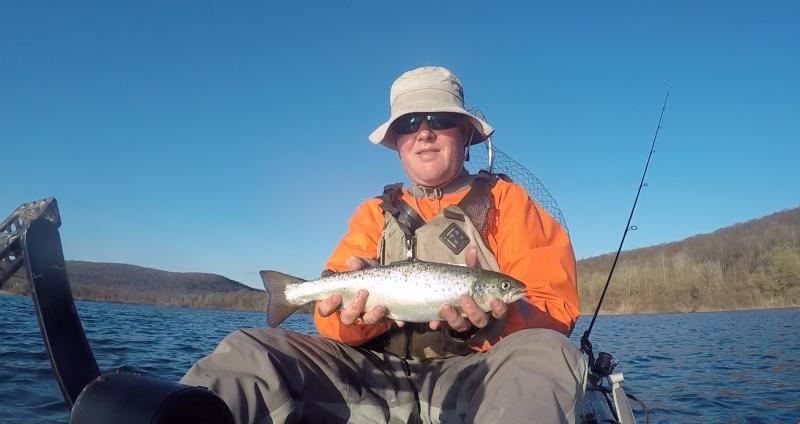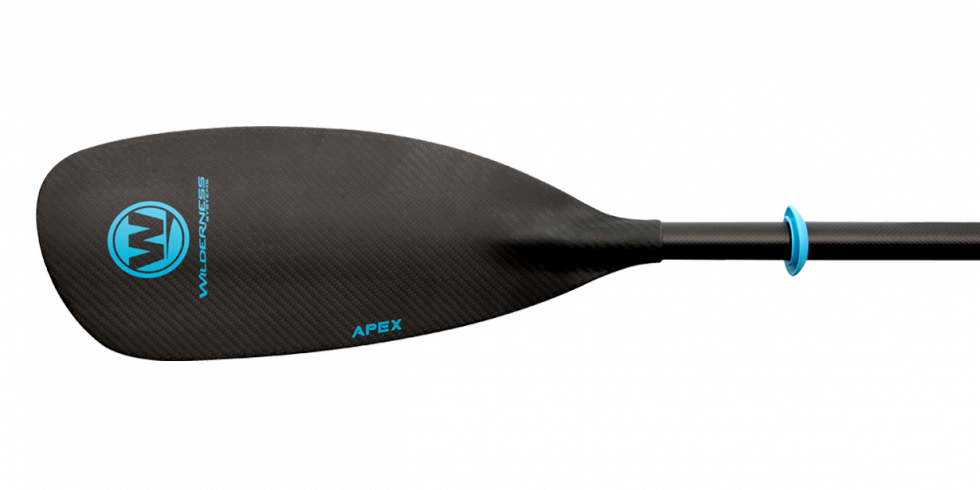
Apex Carbon (2 Sizes)
The Apex Rec/Touring Carbon paddle weights just 27 oz and is the lightest option in the Apex series.
Learn More
The Apex Rec/Touring Carbon paddle weights just 27 oz and is the lightest option in the Apex series.
Learn MoreJoin the Wilderness Systems Email Community
Be the first to know about new products, team news and events.

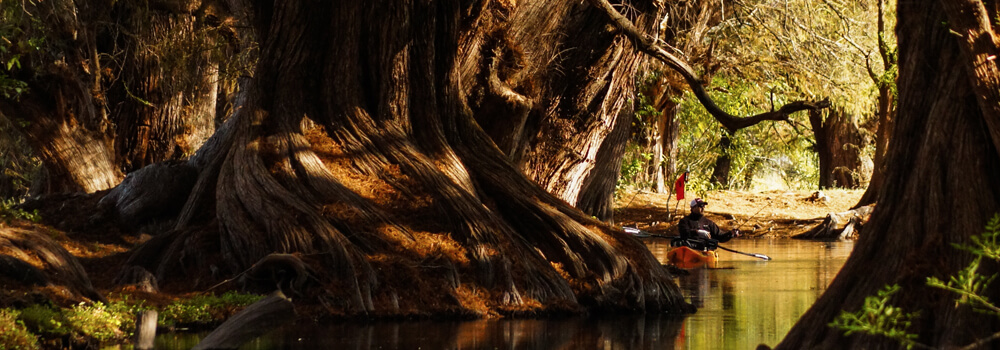
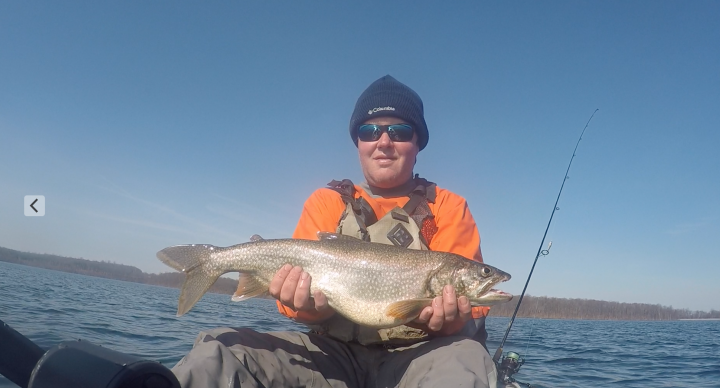
ADVANTAGES OF THE RADAR 135 FOR TARGETING LANDLOCKED SALMON AND LAKE TROUT IN THE NORTHEAST
By Pat Gallagher
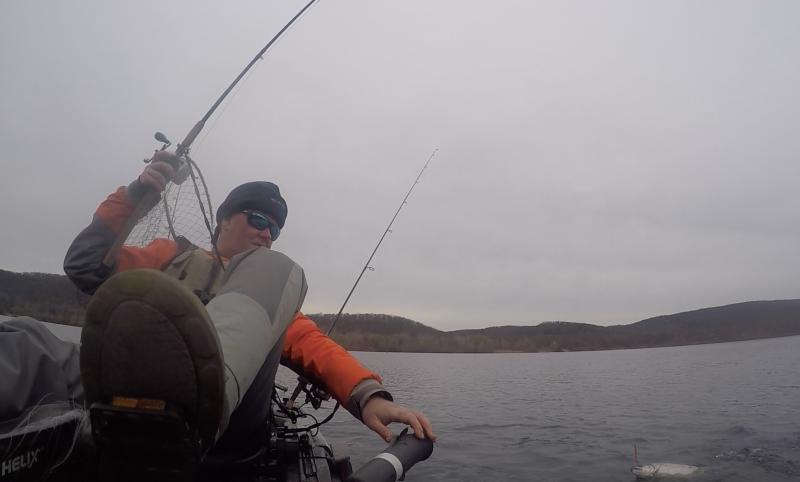 Each spring, an intense fishing bite occurs after ice-out in the north east for cold water salmonoids. Kayak anglers experience some of the fastest action of the year for landlocked salmon at this time. In addition, lake trout congregate in good numbers in relatively shallow water over fingers, humps, and sharp edges. Most of this fishing is done in large lakes with substantial open water exposure to wind and the elements. At this time of year, the weather can be extremely variable as temperatures transition from cold to warm. Wind is almost a given on any particular fishing outing. For this reason, kayak stability and control are essential to both beating the elements and fishing success.
Each spring, an intense fishing bite occurs after ice-out in the north east for cold water salmonoids. Kayak anglers experience some of the fastest action of the year for landlocked salmon at this time. In addition, lake trout congregate in good numbers in relatively shallow water over fingers, humps, and sharp edges. Most of this fishing is done in large lakes with substantial open water exposure to wind and the elements. At this time of year, the weather can be extremely variable as temperatures transition from cold to warm. Wind is almost a given on any particular fishing outing. For this reason, kayak stability and control are essential to both beating the elements and fishing success.
A sturdy kayak with the ability to hedge the wind is a necessity and the Wilderness Radar 135 is the best choice for this type of fishing, which generally involves both trolling and jigging. The Radar is adept in beating the severest elements of early spring. It is sturdy enough to be extremely stable during windy weather while still maximizing your fishing opportunities. Additionally, the Helix Pedal Drive also allows you to effortlessly peddle into wind while trolling. The drive also very effectively hedges the wind while jigging lake trout in open water, allowing you to slow your drift by either peddling backwards or forward.
Trolling for Landlocked Salmon
Despite cold water temperatures, landlocked salmon feed heavily after ice-out. In fact, salmon will bite at the first sign of open water on partially frozen lakes as ice dissipates and causes the water to be super-oxygenated. Salmon almost always suspend. The difficulty in locating them at the beginning of the season is that they can be found almost anywhere in the water column. During warm weather, you can narrow your options by focusing on fishing the thermocline. At the beginning of the year, the salmon disperse in depth. The good news is that they are often schooled up heavily at this time while herding large schools of alewives or smelt. If you catch a salmon in a specific area, focus your efforts in working this area thoroughly, especially if you are marking salmon or bait pods on your sonar.
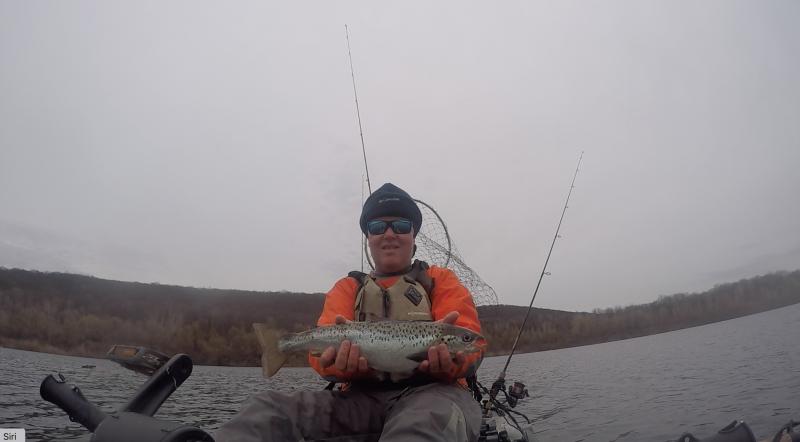 Since the salmon schools are dispersed, the best way to locate them is by trolling. Also, since the salmon can be found along a broad range of the water column, depth control is essential. The surface water is usually too cold for the salmon at the beginning of the year and you will often find them deeper. For this reason, trolling with lead core line offers you the best depth control and allows precision in presenting your offering to the salmon at proper depths. The Radar 135 comes mounted with tracks to attach ball bearing mounts. These ball bearing mounts can be used to mount rod holders which allows you to easily troll two lead core outfits and work totally hands free. Trolling multiple rods allows you to vary depths, as salmon will often be found at a range of depth in the early spring. Speed control is important. Combining your Helix Pedal Drive with a GPS will allow you to experiment with speed to determine the trolling rate that the salmon prefer on a particular outing. Don't be afraid to go fast, as salmon will readily hit lures trolled at faster rates. However, salmon often prefer slower speeds in the colder water of early spring.
Since the salmon schools are dispersed, the best way to locate them is by trolling. Also, since the salmon can be found along a broad range of the water column, depth control is essential. The surface water is usually too cold for the salmon at the beginning of the year and you will often find them deeper. For this reason, trolling with lead core line offers you the best depth control and allows precision in presenting your offering to the salmon at proper depths. The Radar 135 comes mounted with tracks to attach ball bearing mounts. These ball bearing mounts can be used to mount rod holders which allows you to easily troll two lead core outfits and work totally hands free. Trolling multiple rods allows you to vary depths, as salmon will often be found at a range of depth in the early spring. Speed control is important. Combining your Helix Pedal Drive with a GPS will allow you to experiment with speed to determine the trolling rate that the salmon prefer on a particular outing. Don't be afraid to go fast, as salmon will readily hit lures trolled at faster rates. However, salmon often prefer slower speeds in the colder water of early spring.
Jigging Lake Trout
Lake trout can be jigged all season, but the first few weeks after ice out provides a nice option in the early spring since the lake trout may often be found in shallower depths than during the summer. This allows you to narrow your depth range. Generally, lake trout can be found anywhere from 35' to 120'. In the spring, focus your efforts on 40' to 80' with a particular emphasis in areas approximately 50' to 70'. Horizontal jigging allows you to cover more water than vertical jigging. As such, lure control is important and feeling your jig bounce off the bottom is essential. For this reason, go heavy with your jigs. Metal jigging spoons sink faster and are easier to control than plastics. A jig that weighs about 1.25 ounces allows you to fish both shallow and deep and still be able to feel the bottom and hits from lake trout.
Lake trout bite better during bright and sunny days with a little chop on the water. Drifting and horizontally jigging is a great pattern all season. The Helix Peddle Drive allows you to slow your drift by gently peddling forward or backwards as you retrieve your jig providing better control and the opportunity to make a more solid hook-set. The size of the Radar will also allow you to drift slower than smaller and lighter kayaks. The ability to drift and work hands free is priceless. Rigging your rudder system on your weak side will permit you to steer your kayak in the direction to best maximize your jigging and add additional wind control. Lake trout associate heavily with structure. For this reason, look to work deep humps, fingers, and steep edges. Areas between sharply dropping shoreline edges and submerged islands are extremely productive. A wide variety of jigs can be used in targeting lake trout. Some popular choices include Hogy Epoxy Jigs and Lazer Minnows.
The Wilderness Radar allows you to get on the water in some tough early season conditions to take advantage of the fast action of early spring salmon and lake trout fishing. The proper use of this kayak will increase your catch rate exponentially.
